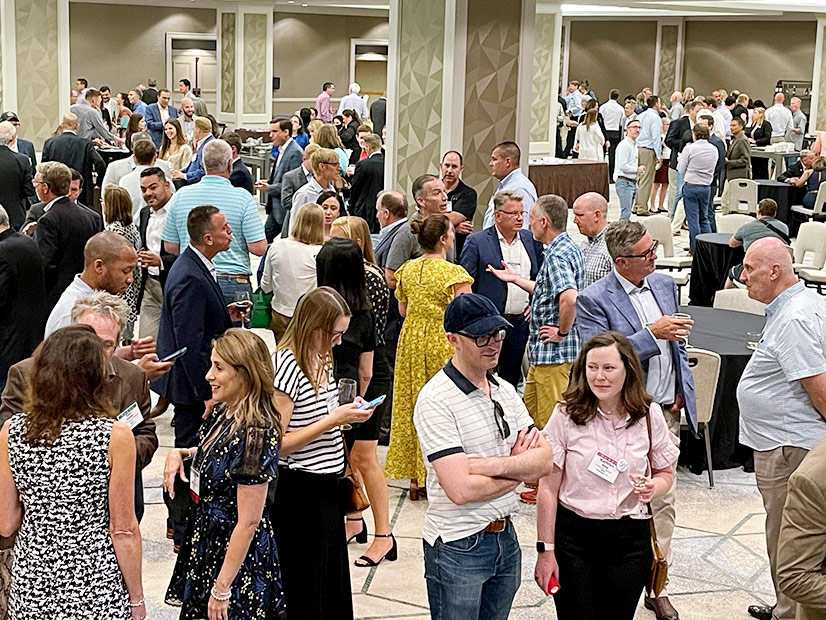DENVER — More than 600 people attended the National Association of Regulatory Utility Commissioners’ Summer Policy Summit in person, and hundreds more watched via livestream for discussions on topics including electrification, new technologies and the challenges of building transmission.
Here’s some highlights of what we heard.
EV Makers Seek to Stop Playing Defense
Philip B. Jones, executive director of the Alliance for Transportation Electrification, used the conference to introduce a paper on rate design principals for electric vehicle charging.
“The alliance wants to be proactive in state proceedings; we’ve been playing a lot of defense,” said Jones, a former Washington state regulator and NARUC president. “We just felt that we, the alliance, needs to have a more consistent … proactive policy on rate design, and then find common ground with all stakeholders.”
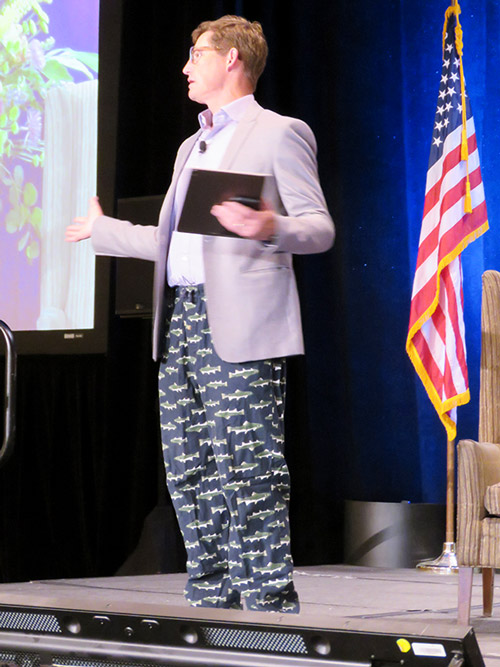
The paper covers both residential and commercial and industrial rates. “Over 80% of charging is done at home, but public DC fast charging is really, really important to the ecosystem because it alleviates range anxiety,” Jones said.
The group said transportation electrification rate design should “fairly recover costs to serve customers while optimizing the use of the electric system and providing overall benefits to customers,” including time-differentiated electric rates to encourage off-peak charging.
But it says “rigid application” of traditional cost-of-service ratemaking may conflict with state’s public policy goals, and “there may be instances where transitional relief is needed to meet state policy goals during a transitional period of EV market development.”
One area for relief is demand charges that can impede the use of commercial EV chargers because of their current low utilization rates. “The usage of public EV chargers can also be unpredictable and ‘spiky,’” the alliance said. “Such charging loads can create unusually high loads (in terms of demand based on kilowatts) for brief periods of time, which are hard to predict. This problem is particularly acute for DC fast chargers.”

Jones appeared on a panel with Francesca Wahl, senior charging policy manager for Tesla (NASDAQ:TSLA), who noted that the company reached a milestone of 2,000 fast chargers globally last year, including 1,000 in the U.S.
Wahl said 39 states have passed legislation or approved regulations concluding that EV charging stations and charging as a service should not be considered public utilities.
“We’re not considered a traditional retail sale of electricity,” she explained, which provides regulatory certainty for EV charging site hosts and enables billing based on consumption.
“Some states used to bill on a dollar-per-minute basis,” she said. “It’s fairer to the customer to bill on a dollar-per-kilowatt-hour.”
Danly Surprised at Success of EIM
Four of the five FERC commissioners attended the conference in person, with Commissioner Allison Clements appearing virtually.
Commissioner James Danly answered questions at a meeting of NARUC’s Committee on Energy Resources and the Environment, where he expressed his surprise at the success of CAISO’s Energy Imbalance Market (EIM).
“I have been amazed at how successful the EIM was given the trepidation with which many of the jurisdictions around California approached joining any kind of market structure at all,” he said.
He said FERC should not attempt to persuade other Western states to join a full RTO but should give “moral support from the sidelines, cheering people on to do the best they can for ratepayers.”
Is there a role for capacity markets in the West?
“Capacity markets are fraught with problems. It takes a Solomon-like wisdom to properly adjust a capacity market to achieve [its] goals,” he said. “That being said, we have had a couple of recent unfortunate experiences in markets that did not have capacity markets to ensure a certain buffer, and that’s also” problematic.
Post-ERCOT Talberg Focuses on Solar Supply Chain
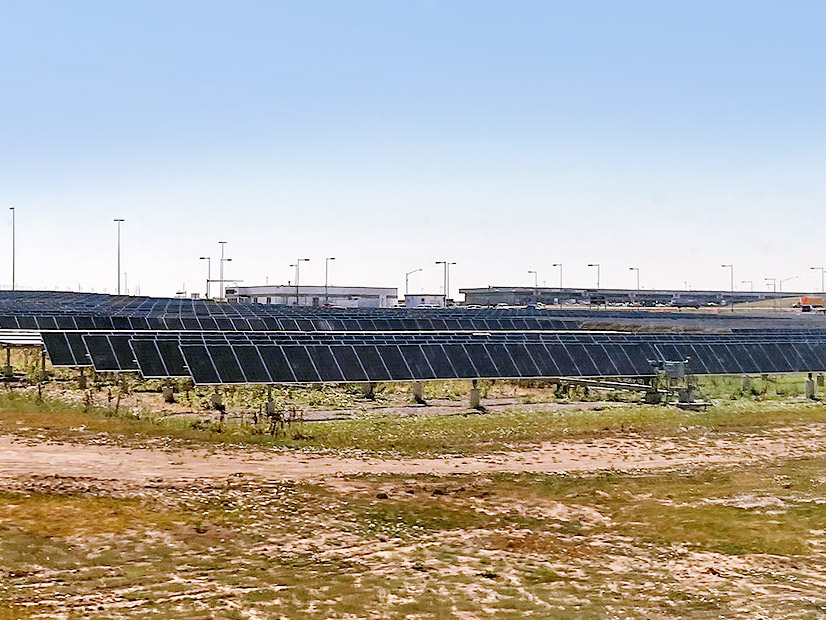
Former Michigan Public Service Commission Chair Sally Talberg re-emerged at NARUC after her ill-fated tenure as a member of ERCOT’s Board of Directors, hosting a breakfast for several clients of her growing policy consultancy.
Talberg gave up the PSC’s chair to become one of five independent directors on the ERCOT board. She held that position for 55 days, 15 as the board’s chair, before joining the other independent directors in resigning after the February winter storm, when their out-of-state residencies became a target of Texans’ anger.
She declined comment on her ERCOT experience as a couple of breakfast diners seated nearby chuckled. She did allow to her audience of 60 or so friends, associates, regulators and potential clients that 2021 “has been an interesting year.”
As president of her eponymous Talberg Policy Solutions, she focuses on gas decarbonization, distribution grid modernization and solar supply chain issues. Talberg does policy and regulatory research, formulates strategy, and identifies and develops connections with government, private sectors and nongovernmental organizations.
Her biggest issue these days is whether her firm’s logo resembles a ginkgo tree, as intended, or an alien’s head.
“I’m excited to use my experience in regulatory and policy strategy to help accelerate our clean energy transition,” Talberg said in an email.
Last week that meant engaging NARUC attendees on how she and her clients can make the U.S. solar supply chains more resilient and sustainable.

“We need a reliable supply of sustainably produced solar panels to meet utility and state clean energy goals,” Talberg said. “Unsustainable practices in some portions of the supply chain threaten that supply, as recent U.S. government actions to block imports from parts of that supply chain demonstrate.”
Michael Parr, executive director of The Ultra Low-Carbon Solar Alliance, said that as an example, China has used primarily coal-fired power to produce enough solar modules to grab a 71% share of that global market. It owns even greater shares of the global supply chain’s other pieces.
“We are providing utilities, governments and corporations the tools to buy better solar and, in so doing, create a more resilient solar supply chain, including reshoring solar manufacturing to the U.S.,” Parr told RTO Insider.
Paying for Transmission’s Costs
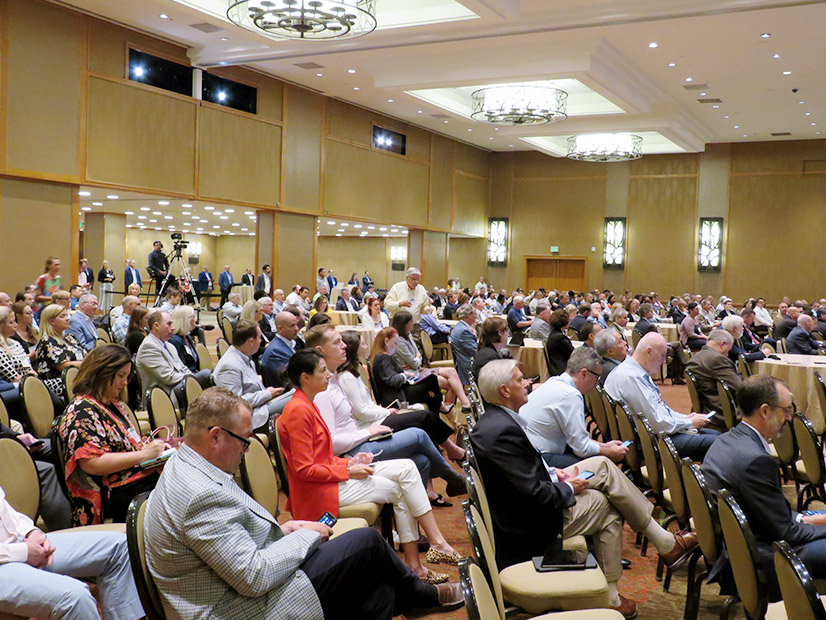
Rob Gramlich, founder and president of Grid Strategies, praised the FERC-NARUC task force that is intended to spur increased transmission development to deliver renewable power, reduce congestion and improve reliability (AD21-15). (See related story, Glick Works to Strengthen Relationship with NARUC.)
“It’s something we’ve needed for some time,” he said. Transmission infrastructure’s “great value is resilience, and that’s something we need to figure out a way to incorporate. It’s a lot more expensive to continue to do the reactive, incremental approach, rather than the efficient, scaled-up approach. If we can do transmission on a wider, regional basis, you will get lower costs per delivered megawatt.”
Gramlich, who breaks down transmission construction into “the three P’s” (planning, permitting and paying), said allocating transmission costs tends to be the most difficult.
“It’s a public good. Everyone benefits,” he said. “I would love to see the joint task force develop some guidance. We will try our best in Washington to get some federal dollars to alleviate the burden on taxpayers. The general message is we can do this. We’ve built big before. This is not rocket science, but we do need to figure out how we structure it in each region.”
Enter, then, the nation’s grid operators. Gramlich said the states play a critical role in transmission planning and cost allocation, but he urged that they work closer with the RTOs.

“The RTOs provided tremendous benefits, and the transmission they’ve built has done the same,” he said. “It would be great for the states to work with the RTOs and the utilities to deliver as much as we can on existing lines. I know the costs are a big issue. Just make sure everybody is comfortable with the existing grid and plan the future grid on an economic basis.”
Speaking alongside Gramlich — albeit virtually in front of a background that screamed tropical paradise — Debra Lew, associate director of Energy Systems Integration Group, called for a national grid authority, housed in the Department of Energy, to work with the regions to increase the development of clean, cheap and reliable energy.
“The existing interregional coordination within an interconnection won’t be sufficient if you’re looking to get large parts of the country to high levels of clean energy,” she said. “We could do this much cheaper if we do this big, using this holistic viewpoint. I agree that it entails a huge amount of effort to try and operationalize, but working with a bottom-up and top-down approach will be needed to get at some of the best solutions.”
Keeping Energy Development in US
Jigar Shah, director of DOE’s Loan Programs Office, said the federal government is working to ensure the technologies of tomorrow are developed in the U.S. today.
“There’s actually much smarter ways of doing things that use American technologies and workers. I’m tired of this technology that has to be rolled out in other countries and not here, just because we’re so conservative,” Shah said during a panel discussion on helping new technologies survive the “valley of death” to commercialization.
“Not all companies deserve to succeed. The goal is not for all companies to succeed, but those that come out of development with a pathway to succeed that is equal to or better than other countries around the world,” he said. “In the past, we’ve encouraged companies to go to the United Kingdom, South Africa or India to scale up technologies.”
DOE has $40 billion in loans and loan guarantees at its disposal to build out energy projects in the U.S., an enticing offer to keep those projects at home.
“The formula is project finance. It’s really a simple model. You start with technology that people believe works,” Shah said. “President Biden has said he would bring the full force of the federal government in the procurement process. That’s what we’re solving for with long-duration storage, short-duration storage [and] pumped hydro.”
Renewable project capital “stacks are great,” he continued. “They provide an equity cushion to make everybody feel comfortable for the companies to be around for the sausage making to occur, but we still have to make great sausage.”
New Technologies in Decarbonizing Natural Gas

The Electric Power Research Institute’s Neva Espinoza, GTI’s Mike Rutkowski and Colorado Sen. Chris Hansen (D) joined to discuss natural gas decarbonization and new advances in the industry. Moderated by New Jersey Board of Public Utilities Commissioner Dianne Solomon and Wisconsin Public Service Commissioner Tyler Huebner, the panel stressed the importance of taking advantage of every method and technology on the path to decarbonization, rather than focus on just a few.
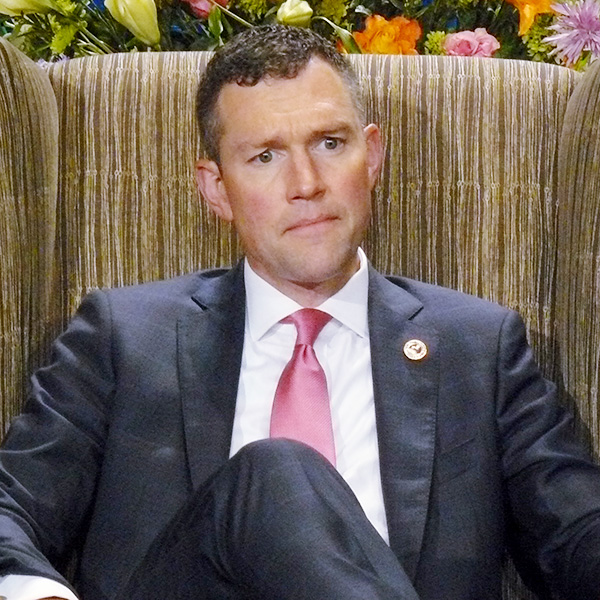
Rutkowski kicked off the discussion, noting that reducing methane emissions from the production and transport of natural gas will be necessary to meet decarbonization goals. Detection and prevention of gas leaks, as well as quick repair when they do occur, will be an important piece, he said. He added that natural gas suppliers that produce minimal emissions should be able to be certified as such, allowing utilities to ensure they’re purchasing from verified low-emissions sources.
GTI and EPRI are collaborating on the Low-Carbon Resources Initiative, a project that aims to identify new technologies to decarbonize the economy. Espinoza touted the possible merits of alternative fuels such as hydrogen, ammonia, synthetic fuels and biofuels, but she also warned that the decisions made now will affect whether it will be feasible to use these alternatives in the future. Rutkowski said it will be crucial that these fuels be able to integrate into existing infrastructure.

Hansen shared a more local view of decarbonization. He pointed to Colorado’s coal mines, landfills and wastewater treatment plants as large contributors to fugitive methane emissions. He said this methane can be captured and used with the right resources.
Solutions to decarbonization will need to be unique and abundant, Espinoza said. “Optionality is not an option. So, we need to be looking at an abundance of technologies, and they’re going to be applied very different across the states, across the world.”
Are Utilities Ready for Fleet Electrification?
While consumer vehicle emissions garner the most attention, fleet vehicles contribute almost a third of North America’s total transportation emissions, Yann Kulp of eIQ Mobility said at a panel on fleet electrification.
“From the EV perspective, I think a lot of the discussion until maybe last year was all around consumer vehicles. … Fleets represent at least 30 million vehicles in North America … and they punch above their weight class in terms of emissions,” he said.
Joining Kulp on the panel were Duke Energy (NYSE:DUK) Managing Director Jay Oliver and Tom Kamantauskas, senior director at PepsiCo (NASDAQ:PEP). Kamantauskas was able to offer the perspective of corporations that would like to electrify their fleets but see various obstacles in making the transition. Oliver noted that his utility is not currently equipped to handle the massive load required for an industry-wide transition to fleet electrification.
“We’re going from a grocery store to a shopping mall essentially in load,” Oliver said.
He added that when major fleets decide to start electrifying, “some serious upgrades are going to be required. We need time to do that. We need to be innovative to do that.”
Oliver said that Duke’s goal is to be ready when that transition comes. Electrifying another sector of the economy leads to questions of resilience, he said. In states like North Carolina and Florida, where Duke operates, there are often severe weather events that jeopardize electric reliability.
“Resiliency is very important for [a company like] PepsiCo, for example. We need to keep them delivering what they deliver. They deliver water. … In an area that’s been devastated by a hurricane, that’s a very critical service,” he said.
Kulp noted that current fleets are highly optimized, but the transition to electric will be unfamiliar territory for these companies that have been following the same processes for almost a century. While Fortune 500 companies may have the resources available to make informed decisions, medium and small fleets will lack that advantage. Kulp sees the role of utilities in fleet electrification as being resources for smaller companies looking for information on making the transition.
“I think it’s important to build an environment in which you have the support mechanisms. … It’s important to put yourself in the shoes of your customer and understand that they need help and that you are the sole trusted adviser that they will have … in [coordinating] these decisions,” he said.
The move to total fleet electrification will inevitably come with a cost, and stakeholders often wonder who’s going to pay for it.
Kamantauskas said if an organization is paying for the vehicles, which are more expensive than internal combustion engines, as well as the charging infrastructure, it can quickly become a financial burden. But Kulp pointed to the potential of private investment, and Oliver said, “If you do this correctly, rates will go down.”
